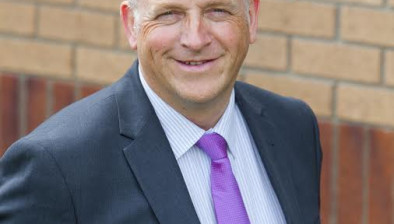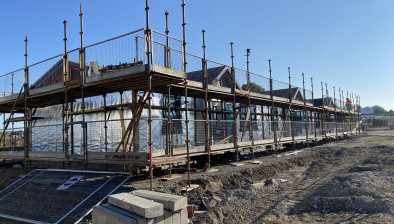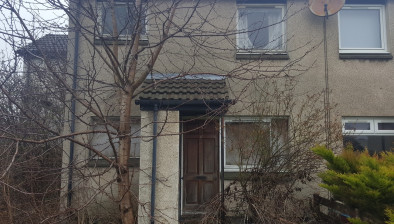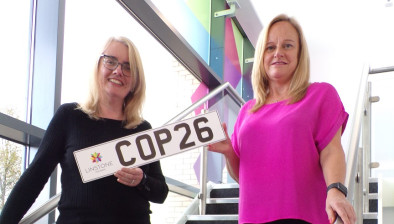New community-owned housing project opens in Fort Augustus
A new £3 million social housing project, built by the Fort Augustus and Glenmoriston Community Company (FAGCC), was opened last week by Shona Robison, cabinet secretary for social justice, housing and local government.

Harry Whiteside, chair of Fort Augustus and Glenmoriston Community Company; Shona Robison MSP and Stuart Hood, head of onshore wind operations and maintenance and chair of Stronelairg Joint Venture Board at SSE
With all eyes currently on the COP26 Climate Change Conference being held in Glasgow, the Community Company is showcasing what can be done at a community level to help address climate change.
With a significant amount of the funding for the housing coming from local wind farm community benefit funds, it is fitting that the twelve new homes for local families have green energy technology at the heart of their design.
In 2019 the Community Company identified a lack of affordable housing for locals as a major issue for the area and the board of directors set about doing something to improve the situation.
They purchased land in the heart of Fort Augustus and drew up plans for homes that would be economical to heat. The homes have been built to a high standard of energy efficiency with air source heating providing the new homes with economical heating and hot water all year round.
Locally sourced stone from an adjacent borrow pit was used to cut down on transport costs and emissions. Longer lasting materials have also been used to cut down on maintenance and replacement reducing waste. The development includes cycle stands to encourage active travel and grounds landscaped with over 500 trees and shrubs including fruit trees and soft fruit bushes.
With a total investment of more than £3 million, the Community Company secured an impressive funding package to ensure the project would go ahead. This included a grant of £970,000 from the Scottish Government; more than £1.5m from SSE Renewables (including £1.2m from Stronelairg Wind Farm Ltd, operated by SSE Renewables, £238,000 from the Bhlaraidh community fund and £115,000 from the SSE Renewables Sustainable Development Fund in Highland); £100,000 from Beinuinn Wind Farm Community Benefit; a loan, funded by Falck Community Benefit via the Royal Bank of Scotland of £150,000; a Social Investment Scotland grant of £125,000; and a loan from Social Investment Scotland of £125,000.

Shaun Sloggie, one of Caledonian Courts new tenants
Shona Robison, cabinet secretary for social justice, housing and local government, said: “I am delighted to officially open these 12 impressive new homes which have been supported by the Scottish Government’s Rural and Islands Housing Fund.
“Good quality, affordable housing is essential to help attract and retain people in Scotland’s remote and rural communities. As part of our £3.4 billion Affordable Housing Supply Programme investment in the last Parliament, over 6,000 affordable homes were delivered in rural and island communities and we are committed to expanding social and affordable housing across the country. We are committed to delivering 110,000 affordable homes by 2032 of which at least 70% will be available for social rent and 10% will be in our remote, rural and island communities.”
Stuart Hood, chair of Stronelairg Wind Farm Ltd, and head of onshore renewables at SSE Renewables, said: “Both SSE Renewables and Stronelairg Wind Farm Ltd are proud to be the principal funders of this incredible project.
“We recognise that there is a significant need for affordable housing in the area and to enable delivery of the project, it made perfect sense to make sure that the Community Company could draw down additional years funding from the Stronelairg community fund.
“The completion of the houses, particularly during the pandemic, is a real credit to the drive and determination of local people, and we are delighted that the properties will provide a lasting legacy for the community for many years to come.”
Councillor Margaret Davidson, leader of Highland Council, said: “I have seen this project since it was an initial idea through to completion of 12 splendid houses, filled with local people, in a beautiful setting. All who have taken part deserve acclaim, especially the Fort Augustus and Glenmoriston Community Company, as they have stuck with the project through some really sticky patches, and I am truly delighted at the outcome. This is a fantastic example of how a community can achieve affordable housing.”









